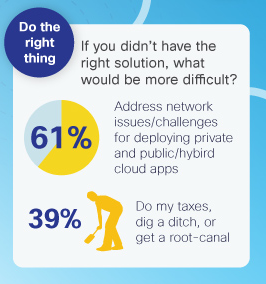Featured Posts
Reaching Channel Excellence Through The Cloud
 A provider of on-premise, off-premise, colocation, Infrastructure-as-a-Service (IaaS), Disaster-Recovery-as-a-Service (DRaaS), hybrid cloud and analytics products and services, Key Information Systems, Inc. is at the heart of the cloud revolution.
A provider of on-premise, off-premise, colocation, Infrastructure-as-a-Service (IaaS), Disaster-Recovery-as-a-Service (DRaaS), hybrid cloud and analytics products and services, Key Information Systems, Inc. is at the heart of the cloud revolution.
The primary goal for Key Information Systems, according to the company’s Director of Enterprise Technology, is to “guide strategy and enable decision-making in today’s world of IT services and digital transformation.”
In the below Q&A, Laughlin shares insights into how the cloud is impacting channel relationships and business opportunities.
CMR: Based on your experience, how has the channel changed or evolved over the past five years? How is change accelerating over time and, in turn, transforming the channel?
Laughlin: As the cloud has evolved, so has the role of the channel. To provide value to clients, we need to be true partners, not just box sellers. We can accomplish this by understanding not only our clients’ IT infrastructures, but their business goals and how IT operations can contribute to the success of the organization, as well. For some channel players, cloud has presented a challenge, because it requires traditional equipment resellers to step out of their comfort zones and become cloud brokers. Cloud offers many benefits to organizations, including flexibility, scalability and affordability. As such, it is an integral part of business IT operations. Without expertise and familiarity in this area, partners limit the assistance they can provide to their clients.
CMR: How are the cloud and as-a-service models transforming channel operations and overall partnerships? What are the overall challenges and opportunities for channel players?
Laughlin: These days, cloud is no longer an “if” conversation; the questions are “when” and “how.” Successful cloud adoption relies on migration success. Regional cloud providers play an active role in these strategies. Many organizations attempt off-the-cuff cloud deployments and learn quickly that, without the proper planning, cloud migration is a complicated undertaking. In this fashion, channel partners can ensure smooth transitions from strategic planning throughout the migration process and provide a more accurate assessment of a company’s return on its cloud investment. There are a host of options to consider. Growing trends, such as Infrastructure-as-a-Service (IaaS), provide additional options to partners, allowing them to offer services like DDoS mitigation, infrastructure performance management, hypervisor maintenance and more to add even greater value to an organization.
CMR: How can channel partners lead cloud conversations and provide advice and counsel? Why is it important to take this approach?
Laughlin: Channel partners play a specific role in cloud adoption for the enterprise, and that means more than supplying clients with products. It starts with one word: communication. Once a channel partner has engaged in a dialogue with the client to determine its technology, and, more importantly, business needs, the partner can recommend the best cloud approach for that business, whether it’s on-premise, off-premise or hybrid. Because no single cloud solution fits the needs of every organization, the right partner can help a company figure out which workloads to move to the cloud and which to keep on premise. That is how the channel stays valuable. Knowledgeable partners help in the decision-making process and develop seamless migration strategies to ensure smooth transitions, including post-migration support.
CMR: With the move to the cloud, business practices may change. What changes do you find to be most common and how can organizations and channel partners remain nimble?
Laughlin: The biggest change today is the shift from project completion and capabilities — completing a project on time and under budget — to end-to-end service management. IT needs to focus on service, storage and the network as a whole instead of specializing in a technical silo. Therefore, you’ll start to see end-to-end service managers for finances, sales, distribution and more. With this shift, sales teams that need assistance will call a service manager instead of an IT help desk. End-to-end responsibility requires a different skillset, so we’re starting to see a need for analysts and people with business experience, versus the previously sought IT specializations. Service managers will be in charge of application delivery, ensuring data integrity and guaranteeing infrastructure performance to support the applications. Some expertise will stay in-house while others will migrate to managed service providers.
CMR: How do you believe the cloud will continue to play a role / become more prevalent in the channel? Do you have any final tips / best practices of which all channel players should take note?
Laughlin: Large-scale clouds offer tangible business value to organizations. Enterprises are going to be selective about their moves to the cloud. They will not be moving everything to the cloud, but, as they become more comfortable with it, they will start to move some of their workloads offsite. Businesses need to focus on what matters most to them and plan a cloud strategy accordingly. Businesses can’t ignore the economies of the cloud, but it’s still the Wild West out there, which is why channel partners are so critical to help navigate the cloud landscape. Channel partners offer cloud skillsets that IT personnel may not have, and partners can provide 24/7 support, so clients always know where their data is and that someone has their back. The channel exists for two reasons: To provide reliable advice and expertise to clients and to give manufacturers the opportunity to find new markets for their solutions. We must offer real solutions to our clients’ business challenges and lead the cloud market to stay relevant in the industry.














